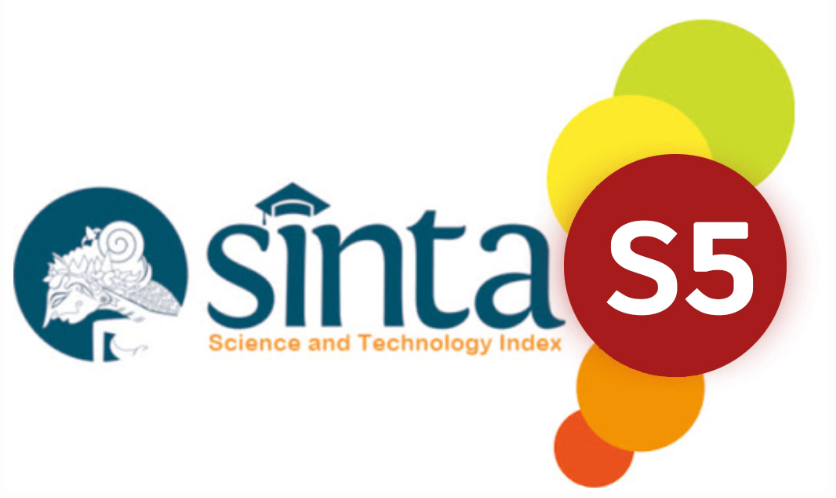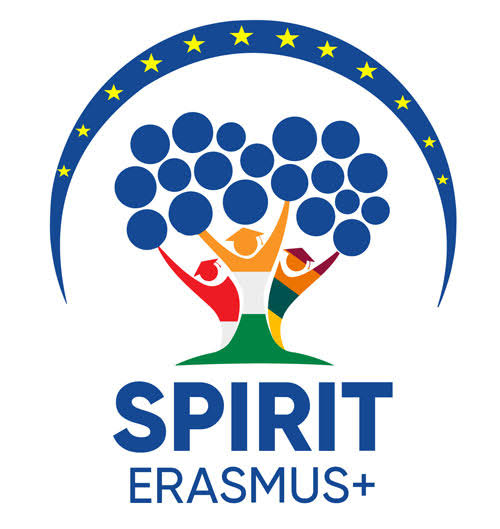Borassus flabellifer Effectively Reduces MDA Levels in High Oxidative Stress Population in Jakarta, Indonesia
DOI:
https://doi.org/10.32734/sumej.v8i2.18966Keywords:
antioxidant therapy, borassus flabellifer, malondialdehyde, oxidative stressAbstract
Background: Malondialdehyde (MDA) is commonly used to assess oxidative stress levels. Objective: This study aimed to investigate the effect of Borassus flabellifer fruit consumption on MDA levels in individuals with high oxidative stress, providing insights into the fruit’s potential as a natural antioxidant therapy. Methods: A prospective interventional study was conducted in Jakarta, recruiting fifty participants aged 30–60 years with baseline MDA levels >10 nmol/L. Participants consumed 150 grams of Borassus flabellifer fruit daily for 30 days. Blood samples were collected at baseline and post-intervention to assess MDA levels. Results: The average MDA level decreased significantly from 14.35 ± 2.43 nmol/L to 12.00 ± 1.74 nmol/L after 30 days of fruit consumption (p < 0.0001). The Cohen’s d value of 2.92 indicated a large effect size, demonstrating the intervention’s substantial impact. A strong positive correlation (r = 0.91, p < 0.0001) between baseline MDA levels and reduction was observed, suggesting that participants with higher baseline oxidative stress benefited more from the intervention. Conclusion: Borassus flabellifer fruit consumption effectively reduces MDA levels in individuals with high oxidative stress. The results support the inclusion of this fruit in recommendations for managing oxidative stress-related conditions.
Downloads
References
Tena N, Martín J, Asuero AG. State of the art of anthocyanins: Antioxidant activity, sources, bioavailability, and therapeutic effect in human health. Antioxidants. 2020;9(5):451. Available from: https://www.mdpi.com/2076-3921/9/5/451.
Nassiri A, Chakit M, Berkiks I, Lamtai M. Oxidative stress: Long-term effects of lipopolysaccharide on hippocampus and prefrontal cortex in male and female Wistar rats. Res J Pharm Technol. 2024;7(17):3268–74. Available from: https://www.researchgate.net/publication/382871257.
Sanjay SS, Shukla AK. Nano-antioxidants. In: Potential Therapeutic Applications of Nano-antioxidants. Singapore: Springer; 2021. p. 31–82. Available from: https://link.springer.com/chapter/10.1007/978-981-16-1143-8_3.
Malayil D, House NC, Puthenparambil D. Borassus flabellifer haustorium extract prevents pro-oxidant mediated cell death and LPS-induced inflammation. Drug Chem Toxicol. 2020;0(0):1–7. Available from: https://www.tandfonline.com/doi/abs/10.1080/01480545.2020.1858854.
Faradiba F. Ethnopharmacology study of medicinal plants in Buginese tribe in the Corowali, Barru District, South Sulawesi Province, Indonesia. In: 1st Makassar Int. Conf. Pharm. 2021;9. Available from: http://repository.umi.ac.id/1744/1/ABSTRA~1.PDF.
Corallo AB, Pechi E, Betucci L, Tiscornia S. Biological control of the Asian citrus psyllid, Diaphorina citri Kuwayama (Hemiptera: Liviidae) by entomopathogenic fungi and their side effects on natural enemies. Egypt J Biol Pest Control. 2021;31:15. Available from: https://www.researchgate.net/publication/348168125.
Huang Y, Haw CY, Zheng Z, Kang J. Biosynthesis of zinc oxide nanomaterials from plant extracts and future green prospects: a topical review. Adv Sustain Syst. 2021;5:1–22. Available from: https://onlinelibrary.wiley.com/doi/abs/10.1002/adsu.202000266.
Barbinta-Patrascu ME, Bita B, Negut I. From nature to technology: Exploring the potential of plant-based materials and modified plants in biomimetics, bionics, and green innovations. Biomimetics. 2024;9(7):390–8. Available from: https://www.mdpi.com/2313-7673/9/7/390.
Tripathy S, Verma DK, Gupta AK, Srivastav PP, Patel AR, Gonzalez et al. Nanoencapsulation of biofunctional components as a burgeoning nanotechnology-based approach for functional food development: A review. Biocatal Agric Biotechnol. 2023;53:88–93. Available from: https://www.sciencedirect.com/science/article/pii/S1878818123002918.
Thomas NM, Sathasivam V, Thirunavukarasu M, Muthukrishnan A, Rajkumar V, Velusamy G. Influence of Borassus flabellifer endocarps hydrolysate on fungal biomass and fatty acids production by the marine fungus Aspergillus sp. Appl Biochem Biotechnol. 2024;196(2):923–4 8. Available from: https://link.springer.com/article/10.1007/s12010-023-04588-6.
Moyo SM, Serem JC, Bester MJ, Mavumengwana V, Kayitesi E. The impact of boiling and in vitro human digestion of Solanum nigrum complex (Black nightshade) on phenolic compounds bioactivity and bioaccessibility. Food Res Int. 2020;137:76–89. Available from: https://www.sciencedirect.com/science/article/pii/S0963996920307456.
Khanna K, Jamwal VL, Kohli SK, Gandhi SG, Ohri P, Bhardwaj R, et al. Plant growth promoting rhizobacteria induced Cd tolerance in Lycopersicon esculentum through altered antioxidative defense expression. Chemosphere. 2019;11(005):463–74. Available from: https://www.sciencedirect.com/science/article/pii/S0045653518321027.
Asif N, Amir M, Fatma T. Recent advances in the synthesis, characterization and biomedical applications of zinc oxide nanoparticles. Bioprocess Biosyst Eng. 2023;46:1377–98. Available from: https://link.springer.com/article/10.1007/s00449-023-02886-1.
Handayani V. Toxicity assay of an ethanol extract of rambutan seeds (Nephelium lappaceum L.) by employing a brine shrimp lethality test. In: 1st Makassar Int. Conf. Pharm. 2021;1:50. Available from: http://repository.umi.ac.id/2573/1/1.%20Toxicity%20Assay%20Of%20An%20Ethanol%20Extract%20Of%20Rambutan%20Seeds%20%28Nephelium%20Lappaceum%20L.%29%20By%20Employing%20A%20Brine%20Shrimp%20Lethality%20Test.pdf.
Poonam M, Kumar D, Budhwar V. Role of herbs in the amelioration of memory loss due to diabetes mellitus: A brief review. Asian J Pharm Pharmacol. 2019;5:430–40. Available from: https://www.ajpp.in/uploaded/p288.pdf.
Hameed S, Iqbal J, Ali M, Khalil AT. Green synthesis of zinc nanoparticles through plant extracts: establishing a novel era in cancer theranostics. Mater Res Express. 2019;9(10):45–54. Available from: https://iopscience.iop.org/article/10.1088/2053-1591/ab40df/meta.
Li X, Liu S, Qu L, Chen Y, Yuan C, Qin A, et al. Dioscin and diosgenin: Insights into their potential protective effects in cardiac diseases. J Ethnopharmacol. 2021;274:114–8. Available from: https://www.sciencedirect.com/science/article/pii/S0378874121002452.
Karimkhani MM, Salarbashi D, Sefidy SS, Mohammadzadeh A. Effect of extraction solvents on lipid peroxidation, antioxidant, antibacterial and antifungal activities of Berberis orthobotrys Bienerat ex CK Schneider. Food Measure. 2019;13:357–67. Available from: https://link.springer.com/article/10.1007/s11694-018-9951-9.
Kim HJ, Narayanankutty A, Sasidharan A, Job JT, Kim YO, Na SW, et al. Methanolic extract of coconut (Cocos nucifera L.) haustorium mitigates pro-oxidant-mediated apoptotic cell death via Nrf-2 pathway and lipopolysaccharide. J King Saud Univ Sci. 2022;34:101–15. Available from: https://www.sciencedirect.com/science/article/pii/S1018364721003773.
Ghanbari A, Jalili C, Salahshoor MR, Javanmardy S, Ravankhah S, Akhshi N. Harmine mitigates cisplatin-induced renal injury in male mice through antioxidant, anti-inflammatory, and anti-apoptosis effects. Res Pharm Sci. 2022;17(4):417–27. Available from: https://journals.lww.com/rips/fulltext/2022/17040.
Hamed R, Obeid RZ, Abu-Huwaij R. Plant mediated-green synthesis of zinc oxide nanoparticles: An insight into biomedical applications. Nanotechnol Rev. 2023;12(1):43–53. Available from: https://www.degruyter.com/document/doi/10.1515/ntrev-2023-0112/html.
Sinlapapanya P, Sumpavapol P, Buatong J, Benjakul S. Ethanolic cashew leaf extract: Antioxidant potential and impact on quality changes of dried fermented catfish during storage. Future Foods. 2024;9(3):100–16. Available from: https://www.sciencedirect.com/science/article/pii/S2666833524000029.
Fang Z, Wan H, Xu Y, Liu Q, Liang J. Indole-acyl esters improve the effect of nitrogen and phosphorous fertilization by mitigating the phytotoxicity and concentrations of cadmium and lead in Jatropha. Arch Biol Sci. 2018;71:50–1. Available from: https://www.serbiosoc.org.rs/arch/index.php/abs/article/view/4006.
Gao H, Wang Z, Zhu D, Zhao L, Xiao W. Dioscin: Therapeutic potential for diabetes and complications. Biomed Pharmacother. 2024;170:116–21. Available from: https://www.sciencedirect.com/science/article/pii/S0753332223018498.
Singh N, Singh MK, Raghuvansi J, Yadav RK, Azim Z. Green synthesis of nano iron oxide using Emblica officinalis L. fruit extract and its impact on growth, chlorophyll content, and metabolic activity of Solanum lycopersicum L. J Appl Biol Biotechnol. 2024;12(2):173–81.
Downloads
Published
How to Cite
Issue
Section
License
Copyright (c) 2025 Sumatera Medical Journal

This work is licensed under a Creative Commons Attribution-ShareAlike 4.0 International License.
The Authors submitting a manuscript do so on the understanding that if accepted for publication, copyright of the article shall be assigned to Sumatera Medical Journal (SUMEJ) and Faculty of Medicine as well as TALENTA Publisher Universitas Sumatera Utara as publisher of the journal.
Copyright encompasses exclusive rights to reproduce and deliver the article in all form and media. The reproduction of any part of this journal, its storage in databases and its transmission by any form or media, will be allowed only with a written permission from Sumatera Medical Journal (SUMEJ).
The Copyright Transfer Form can be downloaded here.
The copyright form should be signed originally and sent to the Editorial Office in the form of original mail or scanned document.











